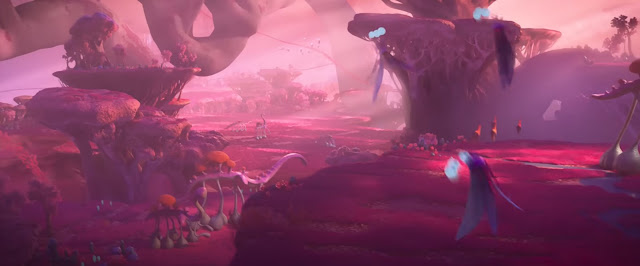Where Is Avalonia in 'Strange World'?
Spoilers ahead
All the world is a stage. Or, in the case of Disney's "Strange World," a reptile.
There's a lot to adore about this movie, from the heartwarming story of familial love to the "Avatar"-like visuals and, in a first for Disney Animation Studios, the openly LGBTQIA lead character.
By the end of this eye-popping spectacle, viewers will have felt as small as the Clade family's parochial worries on the back of their giant adventure. In the grand tradition of movies like "Pocahontas" or "Beauty and the Beast," the colossus of a plot twist reimagines classic Disney themes of self-actualization and individuality for the streaming era. It's the 2022 equivalent of pining for life just around the riverbend or reaching for something more than this provincial life.
The concept of the World or Cosmic Turtle itself is a tale as old as time, and, just like the myth of the Great Flood, found in many cultures from pre-colonial America to ancient India and China.
To learn about the true nature of pando is to learn that Avalonia is Earth. These worlds parallel each other in the way they have benefited and will ultimately suffer from their primary energy sources.
Director Don Hall, in fact, looked to the iconic 1972 photo taken of Earth by Apollo 17 en route to the Moon. Apart from the obvious "Journey to the Center of the Earth" references, Avalonia finds its stylistic center of gravity in the style of pulp magazines Don grew up reading.
Perhaps co-director and screenwriter Qui Nguyen said it best: "It's...just really great to just remember how small you are, but how even though you feel so teeny and how you shouldn't be able to impact something so large, you really do."
Borders, differences—they all do really fade away from a distance.
 |
| The Apollo space missions have yielded beautiful images of the 'Blue Marble' like this one taken during the 1969 lunar landing |







Comments